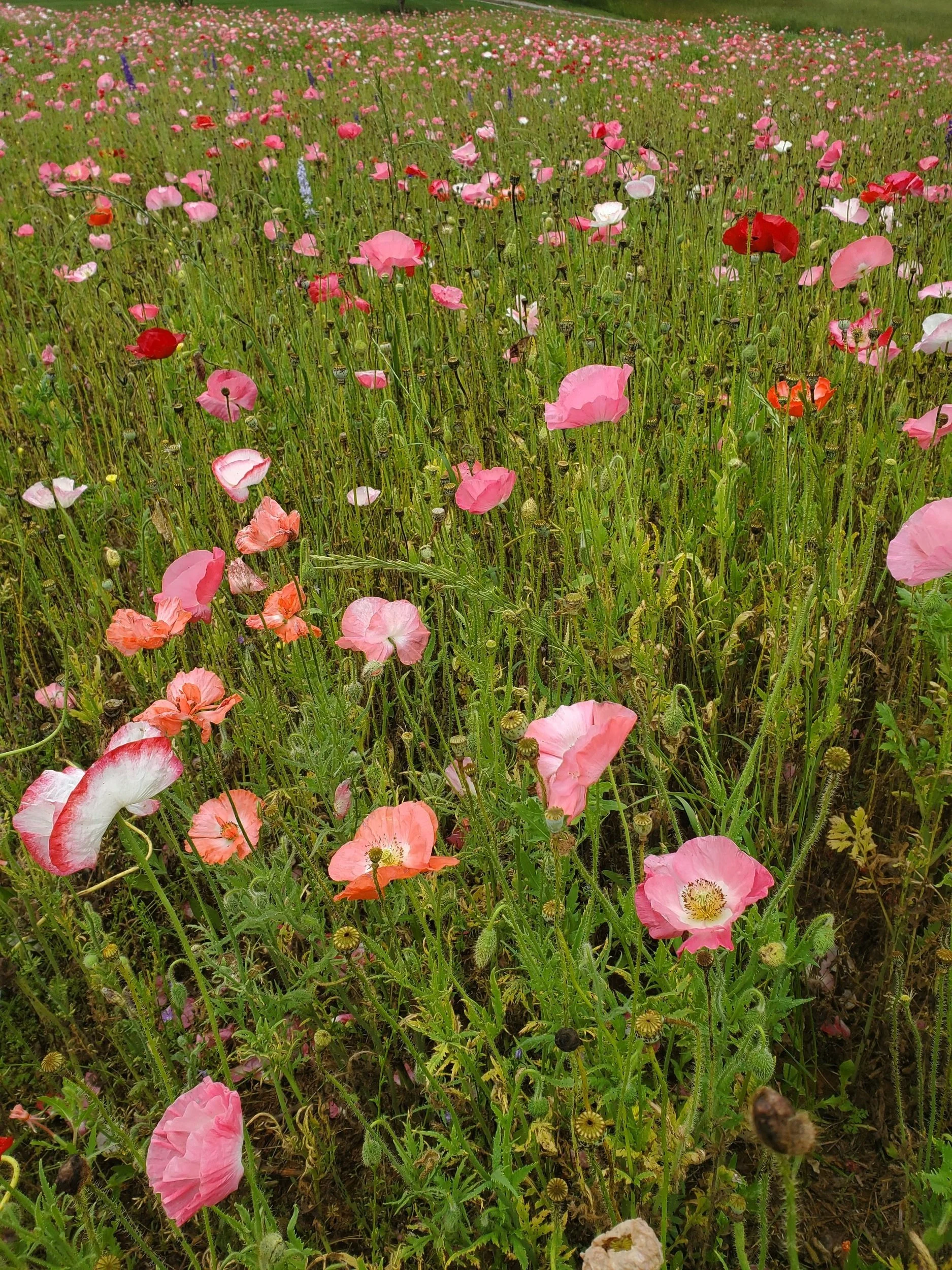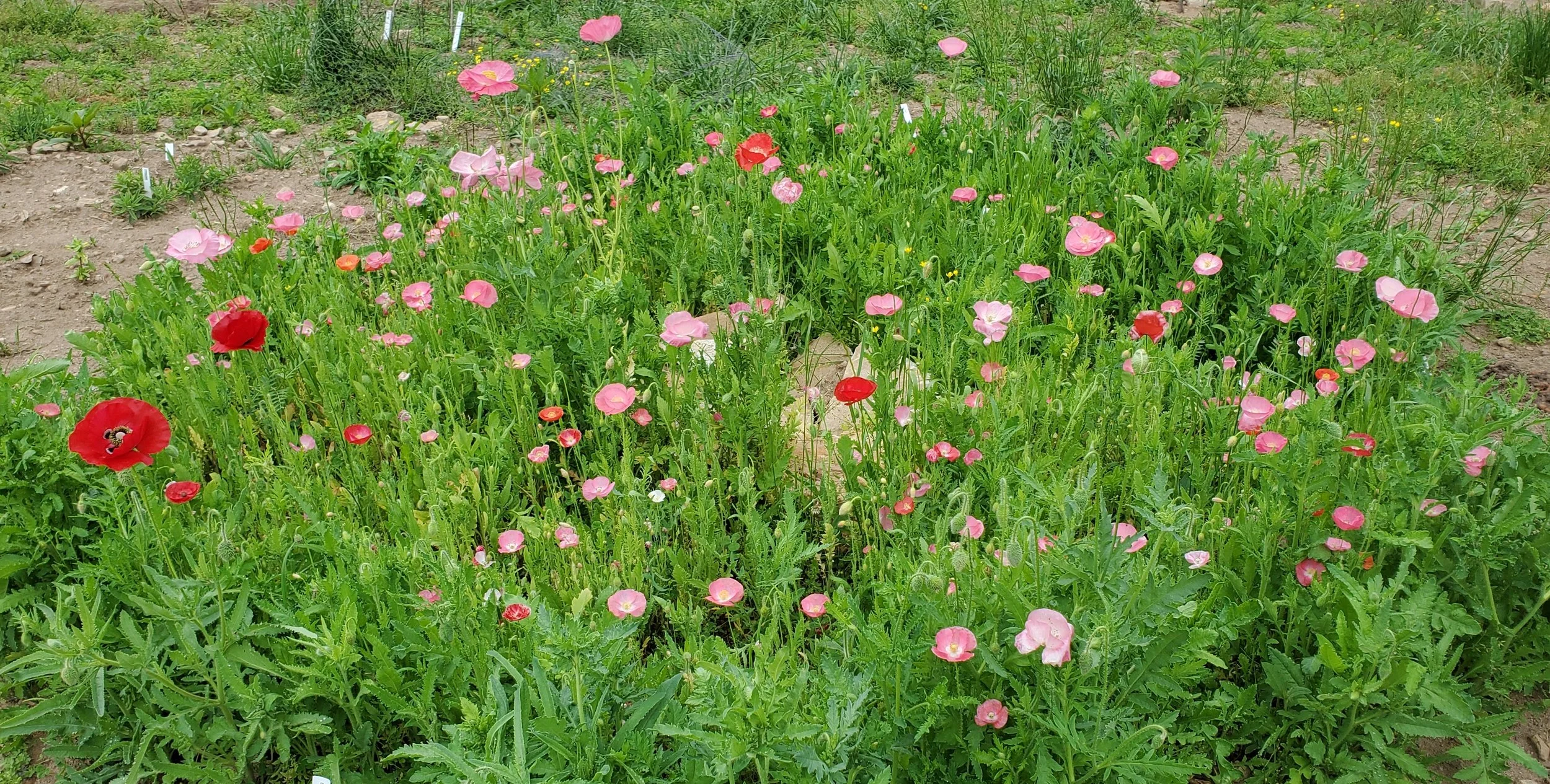Corn poppies (Papaver rhoeas, pronounced puh-PAY-ver ROH-ee-as) are undemanding annuals, easy to start from seed. Select an area in full sun with average soil. Too rich a soil will produce leafy plants with few flowers. Prepare seed bed in fall by removing weeds and raking smooth. In late October or November, scatter the tiny seeds thinly atop the prepared bed. Do not cover. Let Nature handle the rest. Basal rosettes of foliage emerge in early spring when the weather is still cool. They look like weeds at emergence; be careful that you do not remove the seedlings by accident.
Thin stems with flower buds arise from the rosettes, curved at the top like shepherd’s hooks. The crooks straighten to heights up to 30-36 inches before the flowers open. The petals resemble crepe paper, with yellow stamens in the center. Flower colors are red, rose, pink, purple, white, and bi-colors. California poppies (Eschscholzia californica) are a western native similar in appearance but flowers are shades of yellow and orange.
If you are planning a garden event for early spring of next year, consider these for large swathes of color when few other plants are in flower. Corn poppies dislike heat and humidity and will melt away as temperatures rise. They are good to pair with late emerging perennials like Butterfly Weed (Asclepias) or Balloon Flower (Platycodon). Leave a few seed heads if reseeding is desired.
The North Carolina Department of Transportation uses Corn Poppies in median and shoulder plantings along their interstate highways.
I spotted this large field of poppies along a rural road. There were a few Larkspur flowers mixed in. It was a breathtaking sight.
I planted these poppies in a newly prepared bed two years ago to prevent erosion until I got around to designing and planting a larger pollinator garden. I got busy and the bed went unplanted. Luckily, they reseeded and I had a beautiful bed this year, with zero effort on my part.



